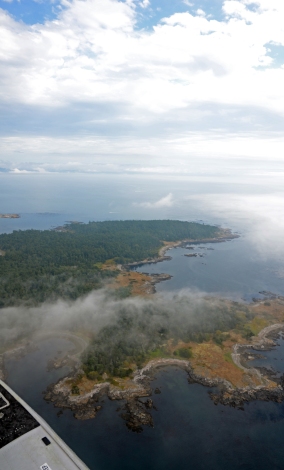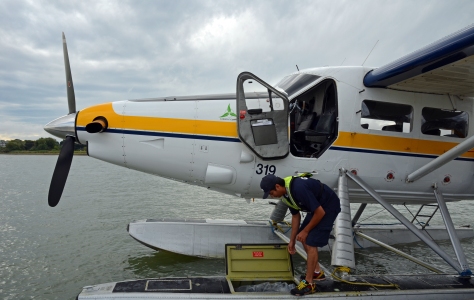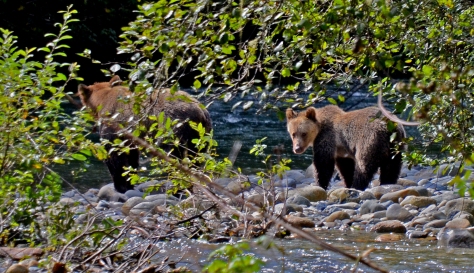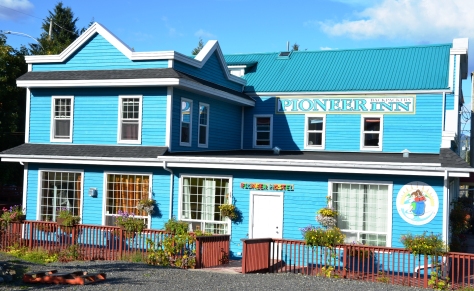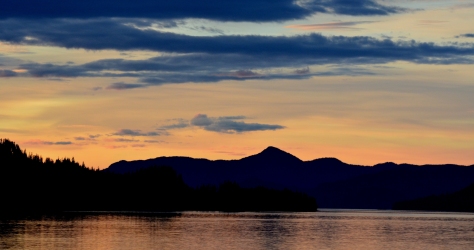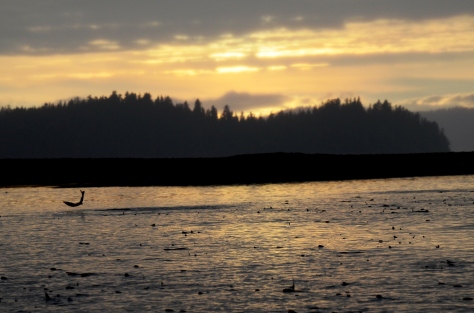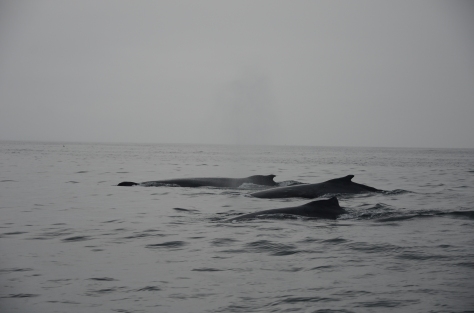
Ucluelet coastline sunset
Until the late 20th century, this national park was only accessible to loggers and seasoned adventurers in their 4×4’s. Nowadays, the Pacific Rim National Park is connected to the east – and much more heavily populated side of Vancouver Island – by the wonderfully scenic ‘Highway 4’. The highway traverses the island, from Parksville on the east coast to Long Beach on the west coast, where it finally splits in two: one branch heads south for 8km to Ucluelet; while the other leads north for 45km to Tofino.
The journey starts off relatively unremarkable as it passes flat, heavily logged and barren terrain. However, quickly, the landscape transforms as the mountains rise up and the old growth temperate rain forest are reinstated. Giant Douglas Firs reaching 7ft across are supported by Sitka Spruce, Western Red Cedar, Western hemlock in this verdant rainforest. The route after Port Alberni follows the rising contours of the Vancouver Island Ranges – a mountain range that effectively forms the spine of Vancouver Island. It only climbs to just over 2100m but yet is still able to accommodate a ski resort and up to 10ft of snow on the roads in the height of winter!!! Quite a contrast to the 3ft of snow and regular -40oC temperatures that much of the far drier Yukon interior is subjected to during its winter.

Map of Tofino and Ucluet and the in between
My stay here was at a small hostel in the fishing town of Ucluelet. Bereft the fame of nearby Tofino, it has correspondingly less tourism, developments and tourists for that matter…. It does, however, have an arguably more spectacular coastline which offers some of the best land based whale-watching in Western Canada. Along the trails around the town is a healthy variety of birdlife including: Steller’s Jay, Belted Kingfisher, Rufous Hummingbird, Northern Flicker, Hairy Woodpecker, Chestnut-backed Chickadees, Western Sandpiper, Great Blue Heron, European Starling and Varied Thrush. On the cobbles of the trail itself I saw 3 Northwestern Garter Snakes (Thamnophis ordinoides) basking out in the late afternoon sun. A colubrid (basically a snake family characterised as being the ‘left overs’ that do not fit into any other family!), the Garter Snake is endemic to the continent of North America and can be found along the west coast of both Canada and the US. (It is NON-venomous!!)

Ucluelet’s rocky coast
At the end of the peninsula on which the town of Ucluelet sits is a lighthouse. It is here where you can best watch for whales from shore. A couple of hours waiting resulted in the sighting of one Humpback passing south just before dusk and also a transitory Steller’s Sea Lion battling its way around the point. Huge tides here of up to 4.5 metres and jagged coastlines draw strong and unpredictable currents. Combine this with the infamous storms that brew in the winter months, and it is hardly surprising that this stretch of coastline has acquired the unenviable nickname: ‘Graveyard of the Pacific’.

Glaucous-winged Gulls (Larus glaucescens) amassing on Long Beach
Having spent my first day here exploring Ucluelet, I decide to head north to Tofino for the second day. I hitched a lift half way there to a point on Long Beach – a 22km long stretch of sand approximately in the middle of the stretch between Ucluelet and Tofino. It is a hugely popular beach for surfers and beach bums alike but, also, an important location for migrating birds on their ‘Pacific Flyway’ between Alaska and parts of central and southern America. Sanderlings and a lone Great Blue heron accompanying a mass of gulls were all I could see on the beach; and a Winter Wren in the forest alongside.

Sanderling (Calidris alba)
Another lift with a Tofino Resident ( heading back from picking chanterelles) took me to the town of Tofino. Fractionally larger than Ucluelet, Tofino has many more hotels, cafes and shops designed to accommodate the rapidly increasing number of tourists that flock here every year. I was only able to spend a few hours here before heading back to Ucluelet for the night.
On my last morning, I saw the only bears which I was to find on Vancouver Island itself; they were in the form of a feeding Black Bear sow and cub on the banks of the muddy estuary behind the hostel!

Estuary behind the hostel
